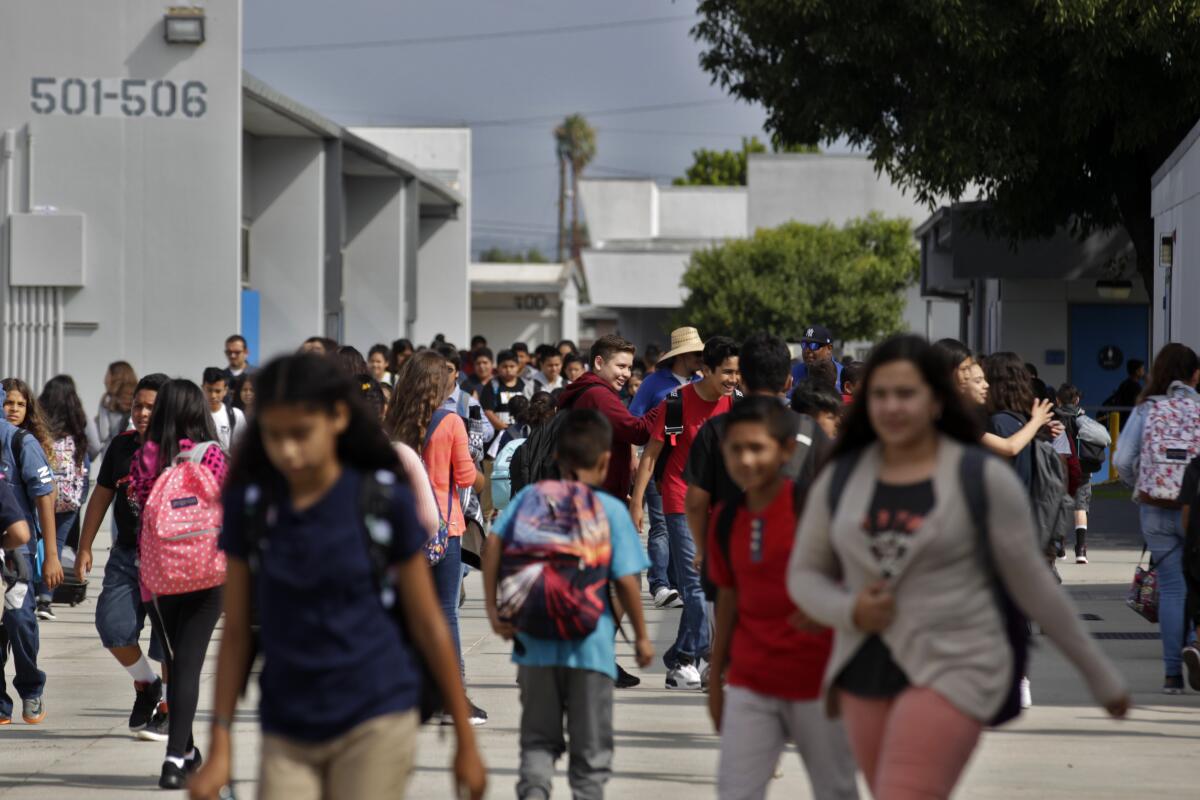Endorsement: Yes on Proposition 13 for school upgrades

Public school districts’ budgets in California are too lean to finance the inevitable demand for new facilities and major repairs to aging buildings. That’s why the state periodically asks the voters to approve bond measures to raise the large additional sums needed to fund that work, to be repaid with income tax revenue over time.
But not all state school-bond measures are good ones. Ideally, these initiatives, which provide matching funds to school districts to build or upgrade school buildings, would prioritize projects according to their importance instead of handing out money to whoever got their applications in first. Low-income schools and those in small school districts should have a good chance of sharing in the largesse.
The last major school bond measure – 2016’s Proposition 51 – did not meet that standard. It made the application process a kind of race that favored wealthier and larger school districts, which had the resources to pull applications together quickly and were more likely to be able to pass local bond measures to raise the required matching funds. This page opposed the initiative, but it was approved that November.
Los Angeles Times editorial board endorsements for the U.S. House, California ballot measures and more.
Much of Proposition 51’s funding has since been claimed, and all of it will be spoken for once the latest applications are approved. But there’s still a need among the state’s older schools for some basic safety upgrades, such as protection from earthquakes, wildfire and lead-contaminated water supplies. Low-income schools are generally most in need of work.
Proposition 13 on the March ballot – ignore the iconic number, it’s just a coincidence – was written to avoid the problems of previous bonds, and it deserves passage.
The measure would authorize the issuance of up to $15 billion in bonds, with $9 billion allocated to K-12 schools and $2 billion each to community colleges, California State University and the University of California.
It’s noteworthy that most of the $9 billion would go toward repairing and renovating schools rather than building new ones. That’s the biggest need in the state, especially at a time of declining enrollment. Yes, some communities are expanding and need new schools, but the measure wouldn’t create an incentive, as previous measures did, to add to sprawl.
Proposition 13 would make it a priority for low-income school districts to get a share of the money. And it creates a sliding scale for fund-matching, so that disadvantaged schools would receive a higher percentage of state money. It also sets aside some money for small school districts so they wouldn’t get shut out by larger districts that get their applications in earlier.
The state’s colleges and universities, meanwhile, are bulging with students. They’re sorely in need of new and updated facilities, including housing.
Opponents, mainly the Howard Jarvis Taxpayer Assn., argue against the bond in part because it would let local school districts propose larger bond measures of their own than the law currently permits. But passage of those measures is completely in the hands of local voters. If they don’t like the amount, they can reject any proposed bond.
California schools already are underfunded compared with other states. The minimum that voters can do is ensure that students attend schools that are safe and modern, reflecting California’s commitment to education, perhaps the state’s most important investment.
More to Read
A cure for the common opinion
Get thought-provoking perspectives with our weekly newsletter.
You may occasionally receive promotional content from the Los Angeles Times.











